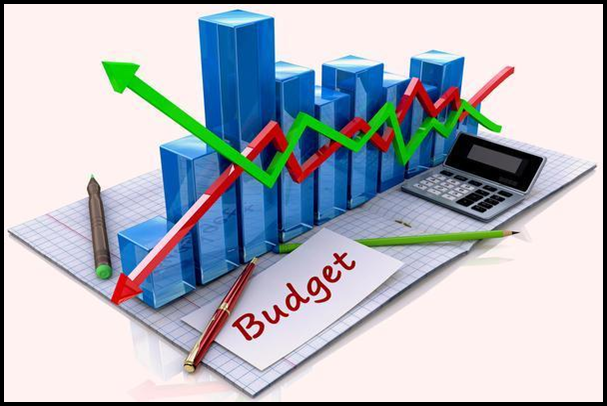A BUDGET THAT DRIVES GROWTH WITH STABILITY
Syllabus:
GS 3:
- Government Budgeting
Focus:
The final Budget for 2024-25, to be presented on July 23, marks the new government’s opportunity to outline its economic strategy. With global economic challenges, the focus is on domestic growth, fiscal consolidation, and employment generation, aiming for sustainable GDP growth and adherence to Fiscal Responsibility and Budget Management (FRBM) targets
Source: Medium
Medium-Term Growth Objectives:
- First Budget: The 2024-25 Budget, presented on July 23, is the first of the new government, offering a chance to outline medium-term growth and employment priorities.
- Economic Slowdown: Due to the global economic slowdown, India must rely on domestic growth drivers.
- Growth Target: The short-term goal is to achieve at least 7% growth, with a medium-term target of sustaining real GDP growth between 7%-7.5%.
- Fiscal Deficit: Aim to reduce the fiscal deficit relative to GDP to 3% over the next three to four years, consistent with FRBM guidelines.
- Employment Focus: Emphasize labor-intensive sectors to boost employment alongside growth objectives.
Investment and Savings Prospects:
- Investment Rate: To sustain 7% plus growth, a real investment rate of 35% is required. The current rate is approximately 33.5% for 2023-24.
- Savings Rate: The saving to GDP ratio needs marginal adjustments to reach and sustain a 35% GFCF rate.
- Household Savings: Increase the household sector financial savings rate, which has recently fallen, to boost investible surplus for private sector investments.
- Export Contribution: Net exports’ contribution to GDP growth has been negative, necessitating reliance on government investment to support growth.
- Service Exports: Service exports are performing better than goods exports, providing some positive contribution to growth.
Budgetary Options:
- Revenue Improvement: The Centre’s revenue position is expected to improve due to higher tax and non-tax revenues.
- Tax Revenue: The gross tax revenues for 2023-24 were higher than revised estimates, with an expected increase for 2024-25.
- Non-Tax Revenue: Non-tax revenues, including RBI dividends, are anticipated to exceed ₹5 lakh crore, aiding fiscal consolidation.
- Expenditure Allocation: Allocate ₹49 lakh crore between revenue and capital expenditures, with increased spending on subsidies, health, and MGNREGA.
- Capital Expenditure: Increase capital expenditure growth to 19.2% in 2024-25 to support investment demand and infrastructure expansion.
FRBM Act: Key Points
What is a Union Budget? Union Budget: Annual financial statement presented on February 1 by the Finance Minister in the Lok Sabha. Preparation: Handled by the Department of Economic Affairs, Ministry of Finance. Classification: Revenue Budget (income and expenditure within a year) and Capital Budget (government’s assets and liabilities). Budget Parts: Part A: Macroeconomic announcements and sector allocations. Part B: Finance Bill with taxation proposals. Constitutional Provisions: Article 112: Annual Financial Statement (Union Budget). Key Documents: Annual Financial Statement, Demands for Grants, Finance Bill, Fiscal Policy Statements. Additional Documents: Expenditure & Receipt of Budget, Expenditure Profile, Budget at a Glance, and more. |
Commitment to FRBM Targets:
- Stability Goals: The Budget aims to combine growth with price and fiscal stability, signaling commitment to FRBM targets.
- Fiscal Deficit: Target a fiscal deficit to GDP ratio of 5.1% in 2024-25, with a plan to reduce it to 3% over the next three to four years.
- Debt Reduction: Lower the debt to GDP ratio and interest payment to revenue receipts ratio by maintaining nominal GDP growth between 11%-11.5%.
- Virtuous Cycle: Achieving these targets will create a virtuous cycle, reducing the fiscal deficit and fostering economic stability.
- Long-Term Vision: Emphasize the importance of long-term fiscal and economic policies to ensure sustained growth and stability
What Needs to Be Done:
- Increase Investment: Boost the real investment rate to 35% of GDP to sustain a 7% plus growth rate.
- Enhance Savings: Implement policies to increase the household financial savings rate, ensuring sufficient investible surplus.
- Fiscal Consolidation: Gradually reduce the fiscal deficit to 3% of GDP within the next three to four years, aligning with FRBM targets.
- Support Exports: Focus on policies that enhance the performance of goods and service exports to positively contribute to GDP growth.
- Stimulate Domestic Demand: Increase government investment in infrastructure and labor-intensive sectors to drive domestic growth.
- Improve Revenue Collection: Strengthen tax and non-tax revenue streams, leveraging higher RBI dividends and tax compliance.
- Rationalize Expenditures: Allocate resources efficiently between revenue and capital expenditures, prioritizing subsidies, health, and rural employment.
- Maintain Price Stability: Monitor inflation and implement measures to keep price stability, ensuring a conducive environment for sustained economic growth.
Conclusion
The 2024-25 Budget is crucial for setting the government’s economic agenda, balancing growth with stability. By focusing on domestic investment, increasing savings, and prudent fiscal management, the government aims to achieve sustained economic growth, reduced fiscal deficits, and improved employment prospects, fostering long-term economic resilience.
Source:The Hindu
Mains Practice Question:
Discuss the importance of fiscal consolidation and investment in achieving sustainable economic growth in India. How can the 2024-25 Budget balance these priorities amidst global economic uncertainties?”
Associated Article:
https://universalinstitutions.com/budget-session-of-parliament/




